The content of the article
Such a small and beautiful fish, the inhabitant of a home aquarium is his real decoration. This species received its name due to its unique color of a pleasant and incredibly warm golden color appearing in males during the spawning period.
Note that when opening this species of fish, an erroneous conclusion was first made about the presence of two subspecies, which was explained by significant differences in color between males and females. This subspecies of gourami is a close congener of such fish as lalyus, which is less popular than honey gourami. The reason for this is a faded species of representatives of this species. To reveal its color to individuals of this species, it takes some time to adapt.
Honey gourami, like most members of the species, belongs to the class of so-called "labyrinth" fish. This means that they have the opportunity to breathe out of the water, respectively, in this case, they require mandatory access to the water surface. This is due to the fact that fish species belonging to the labyrinth type, although they can breathe in water, nevertheless, their nature has also been rewarded with opportunities for complex adaptation to various kinds of conditions. For example, to be in the water with low oxygen, so this type of fish can live very well in those conditions where other species simply die.
I would like to note that such fish are an excellent choice, especially for aquarium fish breeders who do not have sufficient experience. As mentioned above, they have a high survival rate, and there are no great demands on the food offered. Gourami are the most miniature fish of this species. The average size of females - 5 cm, males - about 4 cm.
Thanks to the peacefulness and sociability of the species, its representatives can be maintained with other species. Also, these slightly timid fish feel good in the minimum volumes of water, 10-20 liters will be enough for one individual.
Habitat
The first mention of honey gourai dates back to 1822. The natural habitat of this beautiful fish is India, the countries of South Asia, Nepal. It is found in freshwater bodies of any type and volume, including flooded fields, canals, and large ditches. Usually places that prefer to live these fish are characterized by dense vegetation and fairly soft water. It feeds on zooplankton, various small insects and their larvae.
One of the main features of gourami is in its abilities of a successful hunter for small insects flying above the surface of the water. For this, the fish freezes directly under the surface itself, such an occupation implies even a rather long search for its future prey. Immediately after its appearance within the reach of the fish, the latter performs a fairly powerful “spittle” with water, which helps to bring the insect into the water.
Description
Under natural conditions, the main color of honey beetles is gray-silver with some not too pronounced yellowness. The characteristic strip of light brown color is located along the entire length of the body. During the spawning period, male individuals acquire a brighter and more saturated color. The color of the abdomen and head is dark blue.
We draw attention to the fact that today at the points of sale of aquarium fish you can see honey gouras with different color variations, however, they are all derived from several basic forms of representatives of the species that have a natural color - gold and red. Obtaining individuals with different colors is due to the desire of breeders in obtaining fish with more original and saturated colors, obtained by crossing pairs of representatives of species that have the most preferred and externally attractive colors.
What difficulties may arise with its content
Honey gourami is a very spectacular fish, absolutely unpretentious in its care, which suggests that its content will be the ideal solution for novice and inexperienced breeders of such pets. This is due to the ease of care. In addition, gourami do not require special delights in nutrition, as they eat all the food offered to her. Although the fish prefers warmer water for living, it can nevertheless get used to keeping it cooler.
Feeding
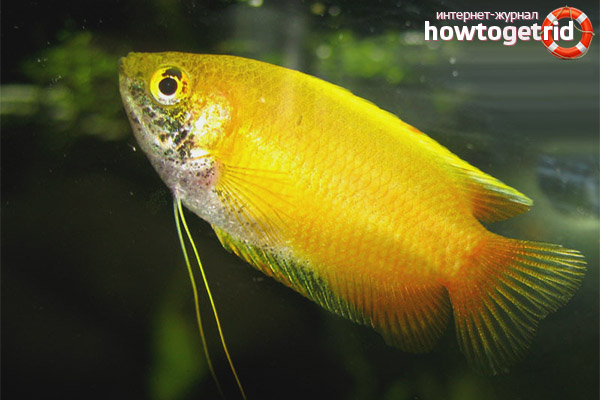
As stated above, it is an omnivorous fish, feeding in its natural habitat by insects and their larvae. That is, you can use different feeds for its nutrition. Note that as a basis it is better to use any feed in the form of flakes with a mandatory additional top dressing (for this additional feed you can include: bloodworm, artemia, etc.). When using the straws for feeding fish, the owners of the aquarium pet should be extremely careful, this food often leads to the death of pets due to the banal overeating.
Peculiarities of content in aquarium conditions
Gourami in the home aquarium prefer to stay closer to the water surface. For the maintenance of these beautiful and spectacular fish, you can use aquariums or tanks of small sizes. For one pair of fish, an aquarium of 40 liters is enough.
One of the most important requirements for the maintenance of gutters is the temperature indicators of the air in the room where the aquarium is installed - they should be as close as possible to the water temperature, which is explained by the fact that the fish breathes and atmospheric air. If the difference between the temperature indices is significant - damage to the labyrinth organ of the fish is possible.
For an aquarium it is better to choose a bottom covering of a dark color - with gourams it looks most impressive against a dark background. Also, do not forget about the vegetation for shelter, as well as a variety of additional artificial and natural materials for placement in the aquarium. Although honey gourami are quite sociable and friendly fishes, nevertheless, timidity with fearfulness can be attributed to the characteristics of their characteristic behavior.and small caves are the best suited for their shelter.
Compatibility
Fish are excellent neighbors, but when choosing neighbors for them in an aquarium, some slowness should be taken into account. It should be ensured that the honey gourams have time to eat. You should not plant gourami with fairly aggressive and large species, since such neighbors can leave them hungry.
We draw attention to the fact that honey gourami is not a schooling fish, however, they welcome good company and good neighbors. Therefore, in this case, the optimal solution would be the content of a group of pairs.
Sex differences
The main difference between a male and a female is the characteristic honey color of his body and the belly of a dark blue color. The female is usually somewhat larger than the male with a more faded color.
Breeding
Before spawning, the selected pair of gourages is richly fed with live food. At one time, the female can lay about 20-25 eggs, after which they are inseminated by the male. The process of laying and insemination continues until a few hundred eggs (up to three hundred) are gathered in the nest prepared by the male.
The spitting of the fry occurs in 24-36 hours. The fry begin to eat independently after three days. For food is used ciliates.
Video: honey aquarium fish gourami

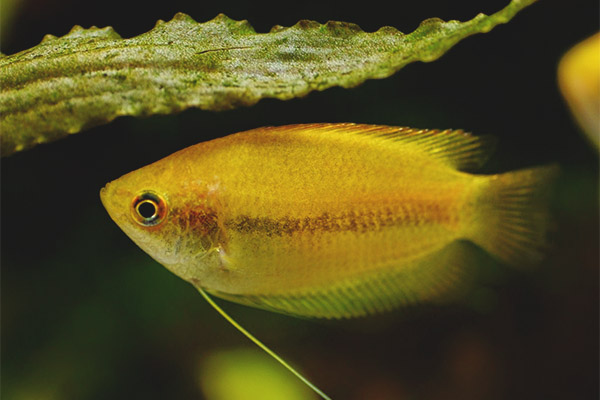
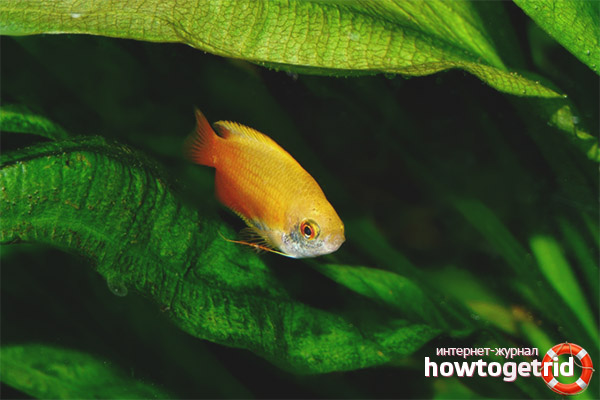
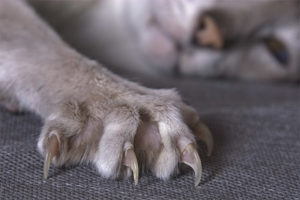
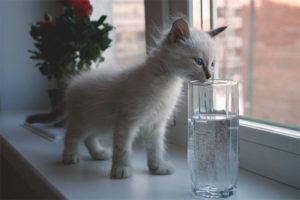

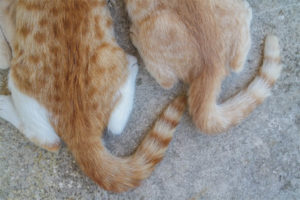


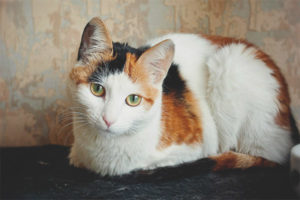
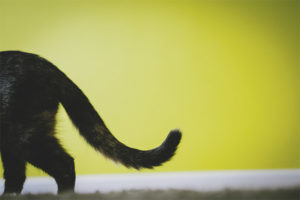
To send